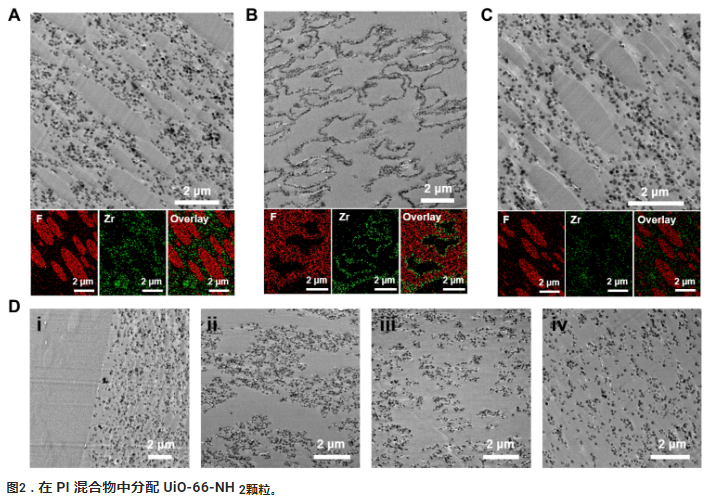
hotline:
17715390137
Tel/Wechat:
18101240246 (Technology)
0512-68565571
Email:mxenes@163.com (Sales Engineer)bkxc.bonnie@gmail.com
Scan the code to follow or search the official account on WeChat:
2D Materials Fronrier After paying attention,
click on the lower right corner to contact us,
Enter enterprise WeChat.
Professional Services Online

已传文件:photo/1689835804.png
 16898358042.png
16898358042.png
Achieving percolation pathways in a metal-organic framework (MOF)–based mixed matrix membrane (MMM) without compromising its mechanical properties is challenging. We developed phase separated (PS)–MMMs with an interconnected MOF domain running across the whole membrane. Through demixing two immiscible polyimides, the MOF particles were selectively partitioned into one of the preferred polymer domains at over 50 volume % local packing density, leading to a percolated network at only 19 weight % MOF loading. The CO2 permeability of this PS-MMM is 6.6 times that of the pure polymer membrane, while the CO2/N2 and CO2/CH4 selectivity remain largely unchanged. Meanwhile, benefiting from its unique co-continuous morphology, the PS-MMM also exhibited markedly improved membrane ductility compared to the conventional MMM at similar MOF loading. PS-MMMs offer a practical solution to simultaneously achieve high membrane permeability and good mechanical properties.







| Reminder: Beijing Beike New Material Technology Co., Ltd. supplies products only for scientific research, not for humans |
| All rights reserved © 2019 beijing beike new material Technology Co., Ltd 京ICP备16054715-2号 |